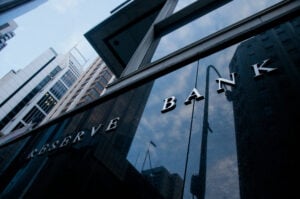South Africa’s largest independent supermarket operator, being a privately-owned group, had already acquired a number of supermarkets in South-East Queensland and was seeking debt funding to continue expanding their Australian footprint.
Beyond the near-term acquisitions, it was clear that they weren’t here to play with the kids in the sandpit…
With those ambitions in mind, we discussed the value in structuring & negotiating a debt funding package that would provide them with a clear path to rapid growth in the Australian market, to be able to take advantage of opportunities quickly & confidently, as and when they were identified.
Although they were very much “a proven player” back home in South Africa and had made a great start here in Australia, there were some critical challenges that we had to overcome, including:
Security
Or lack thereof. No real estate security involved here. No ability to lend based upon a maximum LVR against property value.
Straight away, the fact that this was a proper corporate-style deal, with lending being secured against the businesses themselves (all operating from leased premises), a bank’s recourse would largely be against fit-outs, perishable & non-perishable inventory – and the promise of continuing to be profitable and generate sufficient cash flow to repay the debt.
Straight away, this pulled a couple of banks out (yeah, we also scoff when every bank talks about how they support businesses, when the reality is that some of them really only provide support up to a certain property LVR!).
COVID & Credit Appetite
Just think of all those empty shelves where the toilet paper and hand sanitiser had been…
Supermarkets were one of the few sectors that outperformed amidst COVID. Yet even we were surprised at the lack of excitement in the local banks’ appetite through COVID – for any deal at all, no matter how much it made sense.
Foreign Ownership
As you might expect for a privately-owned group that is the largest player in its sector in South Africa, a large percentage of the group was owned by foreign entities and individuals. Although the group had ticked every box required by the Australian government, that didn’t mean that Australian banks/bankers were totally ok with the structure; in fact, one bank just couldn’t get past it and pulled out of the race.
“Walk Around Money”
The group had agreed with STAC’s strategy to not just seek the funding that was needed in the near-term, but to seek additional funding lines in order to provide certainty for their continued expansion.
But asking a bank for a committed funding line without an immediate transaction need, can carry a term that banks haven’t been fans of since the GFC – “walk around money”.
Banks these days like to have very clear sight as to what exactly the funds are being used for, no matter how much security they’re provided.
Multiple Stakeholders
With multiple stakeholders including wholesaler suppliers, landlords for multiple existing and new stores, local & foreign directors & shareholders, suffice to say that negotiating a raft of agreements and even just signing documentation, was not a walk in the park.
The Outcome
Ultimately we negotiated a debt structure with a major bank for a funding line committed (i.e. facility in place and able to draw, not just indicative promises) to cover the immediate need as well as ready access to funds to be able to confidently head out looking for acquisitions or new opportunities.
Amidst COVID and all of the other hurdles that we faced, this was undoubtedly a deal that we were very proud of ourselves in achieving an outstanding result for our client.
We very much look forward to continuing to support this client as they undoubtedly and inevitably head towards the need to add an extra zero to their funding lines as they take Australia by storm!



